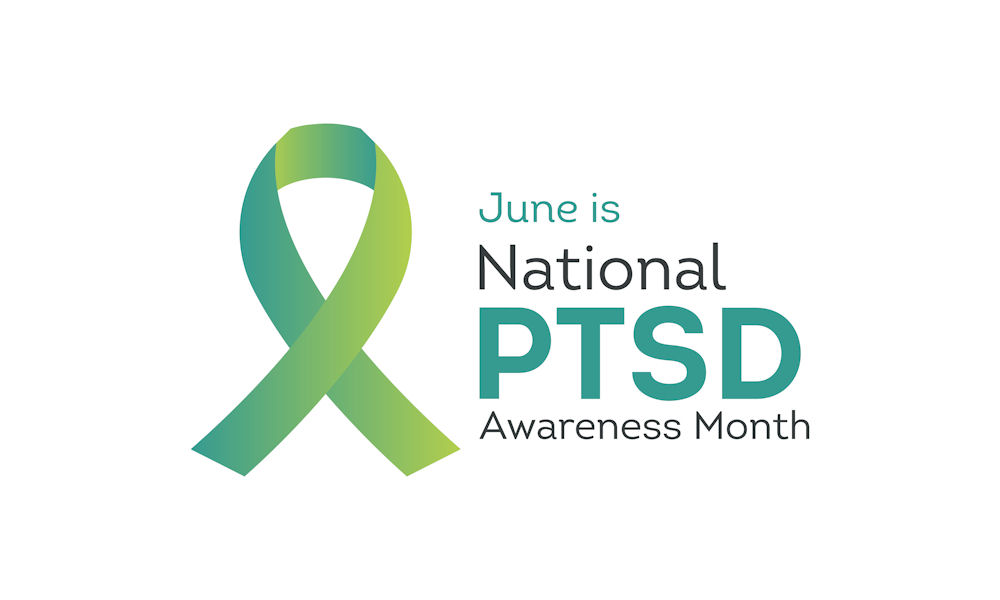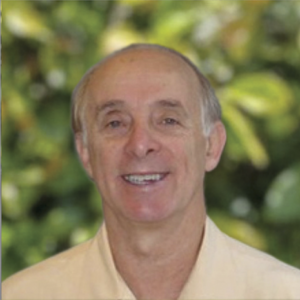Many organizations take part in PTSD-awareness activities throughout June every year to focus on information about post-traumatic stress disorder symptoms and treatments that are available. Over the past few years, PTSD awareness has had a significant role as communities nationwide have experienced mass casualty events involving children and people targeted because of being members of diverse populations.
In 1980, “PTSD” first appeared in the third edition of the Diagnostic and Statistical Manual of Mental Disorders. Earlier medical publications referred to conditions described:
- Soldier’s heart
- Combat fatigue
- Shell shock
- War neurosis
With the prevalence of PTSD in the military community, it isn’t surprising that the drive to create awareness was initiated as a tribute to a service member. On June 27, 2010, PTSD Awareness Day was begun in recognition of Staff Sergeant, Joe Biel. Biel was a National Guard service member who experienced PTSD after two tours in Iraq and died by suicide in 2007. The federal government designated the entire month of June as PTSD Awareness Month.
What is PTSD?

PTSD is a psychiatric disorder that may develop in people who have witnessed or experienced:
- A traumatic event
- A series of events
- A set of circumstances
These can be experienced emotionally or physically harmful or life-threatening and might affect their physical, mental, social, or spiritual well-being. Individuals with PTSD have extreme, disturbing thoughts and feelings related to their experience that continue long after the event.
Prevalence
The National Center for PTSD has indicated that:
- About 6% of the population will have PTSD at some point during their lives.
- About 12 million adults in the U.S. have PTSD during a given year.
- In 2020, about 13 million people in the U.S. had PTSD.
- Women are more likely to develop PTSD (about 8%) than men (about 4%)
- Veterans are more likely to develop PTSD than civilians.
- The number of veterans with PTSD varies by service dates.
- About 11 to 20 of every 100 veterans of Operation Iraqi Freedom or Operation Enduring Freedom have PTSD, in any given year.
- About 12 or every 100 Gulf War veterans have had PTSD.
- About 30 of every 100 Vietnam veterans have had PTSD during their lifetime.
What Causes PTSD?
PTSD can develop after an extremely stressful, frightening, or distressing event or an extended traumatic experience. These are the types of events that can lead to PTSD:
- Physical or sexual assault
- Serious accidents
- Abuse (including domestic or childhood)
- Being exposed to traumatic events at work.
- Serious health issues, such as being admitted to an intensive care unit
- Distressing childbirth experiences, such as losing a baby
- Death of someone close to you
- War and Combat
- Torture
About 1 in 3 people who experience severe trauma will develop PTSD. It is not entirely understood why some people develop it and others don’t. However, you may be more likely to develop PTSD after a traumatic event if you’ve had anxiety or depression or don’t get much support from friends or family.
Several possibilities have been suggested such as:
PTSD may result from an intuitive mechanism meant to help you survive more traumatic experiences. For example:
- Many people experience flashbacks, which may force them to think about the event in detail so they’re better prepared if it occurs again.
- The feeling of being “on edge” (hyperarousal) may develop to provide a quick reaction in another crisis.
Although these responses may be meant to help with survival, they are not helpful because they prevent the individual from processing and moving on from the trauma.
Some studies have indicated that people with PTSD have abnormal levels of stress hormones. Often known as the “fight-or-flight” response, it helps to deaden senses and dull pain. Individuals with PTSD have been found to continue to produce high levels of fight-or-flight hormones even when there isn’t any danger.
In brain scans, the parts of the brain involved with emotional processing appear different in people with PTSD. One part of the brain responsible for emotions and memory is called the hippocampus and in people with PTSD, the hippocampus appears smaller in size. It’s believed that changes in this part of the brain might be related to:
- Fear and anxiety
- Problems with memory
- Flashbacks
The dysfunction of the hippocampus may prevent flashbacks and nightmares from being properly processed, so the anxiety they cause doesn’t reduce over time. Treatment of PTSD helps with the proper processing of memories, so the flashbacks and nightmares disappear gradually.
Symptoms of PTSD
During PTSD awareness month, probably the best way to understand the illness is by learning the symptoms of PTSD and what the sufferers go through. Most of the time, symptoms develop during the first month after the traumatic event. Still, in a minority of cases, there may be a delay of months or even years before the onset of symptoms.
Some individuals with PTSD go through long periods when their symptoms aren’t as noticeable, followed by periods when they are worse. And other people’s symptoms are constant and severe. PTSD symptoms can vary widely between people but usually fall into these categories:
This is the most typical symptom. It is when the person involuntarily and vividly relives the traumatic experience in the form of:
- Nightmares
- Flashbacks
- Upsetting and repetitive images or sensations
- Physical sensations such as pain, sweating, feeling sick, or shaking
Some people have continual negative thoughts about the event, constantly asking themselves questions that keep them from coming to terms with the event. They may ask why it happened to them and if they could have stopped it. This just leads to feelings of guilt or shame.
Another key symptom is avoiding any reminder of the event. Typically, this means avoiding certain places or people that remind them of the trauma or avoiding talking about it. People with PTSD often try to push memories of the event out of their minds by distracting themselves with work or hobbies. Then some people try to deal with their feelings by trying not to feel anything at all. This is called emotional numbing. Some people will turn to substances and become isolated and withdrawn.
- Always on guard for danger
- Angry outbursts
- Irritability
- Sleeping problems
- Problems concentrating
- Being easily startled
Adverse changes in thinking and mood include:
- Negative thoughts about other people, the world, or themself
- Hopelessness about the future
- Problems maintaining close relationships
- Feeling removed from friends and family
- Memory problems (this includes not remembering important parts of the traumatic event)
Often, people with PTSD have other problems including:
- Other mental health problems such as types of anxiety, depression, and other mood disorders.
- Destructive or self-harming behaviors such as drug or alcohol abuse.
- Physical symptoms such as headaches, dizziness, chest pains, and stomach aches
Treatment for PTSD
Years of research show that the most effective treatments for PTSD include psychotherapies and medications.
Some of the evidence-based psychotherapies we use to treat PTSD include:
- Prolonged exposure therapy: This therapy uses repeated, detailed imagining of the trauma or progressive exposures to “triggers” in a controlled, safe way. Eventually, the individual faces, gains control of their fear, and learns to cope.
- Cognitive-behavioral therapy (CBT): Cognitive processing therapy is a cognitive behavioral therapy designed to treat PTSD and co-occurring symptoms specifically. The goal is to change painful negative emotions (shame, guilt, etc.) and beliefs (I failed, the world is dangerous, etc) that have been caused by the trauma.
- Individual therapy: Individual psychotherapy is used to help individuals manage their emotions, behaviors, and thoughts. One-on-one sessions with a therapist will help you or a loved one learn more about your mental disorders and teach you coping strategies to better manage them.
- Group therapy: Group therapy for PTSD encourages survivors of similar traumatic events to share their experiences. Members help each other realize that many people would respond and feel the same way. Family therapy also might help because the distress and behavior of the person with PTSD often affect the whole family
Medication can help control PTSD symptoms. The relief that it provides enables many people to take part in psychotherapy more effectively.
- Antidepressants and anti-anxiety medications: SSRIs and SNRIs such as Zoloft and Paxil are antidepressants that are commonly used to treat core symptoms and anxiety. They can be used alone or in combination with psychotherapy.
- Insomnia medication: Zolpidem is a nonbenzodiazepine medication with a low potential for addiction that helps relieve sleep problems.
PTSD Treatment at 449 Recovery
Now that you’re more aware of PTSD, do you recognize anyone in your life who might be struggling? Are you the person who is struggling? You can find the help you need at 449 Recovery in Mission Viejo, CA.
449 Recovery can offer a special dual diagnosis program along with outpatient programs and an aftercare program. We want you to succeed. Don’t wait. Contact us today.

Dr. Warren Taff MD, graduated from the University of Birmingham, England School of Medicine, with a BA from Rutgers University. He then went on to UCLA School of Public Health in Los Angeles Health and Human Services and received an MPH. He also attended an internship in internal medicine, with the Veterans Administration. Dr. Taff’s residency includes General Psychiatry at USC, with elective residencies at the Royal Prince Alfred Hospital in Sydney, Australia, and Royal College of Psychiatry. Board certifications include American Board of Psychiatry and Neurology. Dr. Taff has extensive experience in both psychiatry and addiction medicine, extending from 1979 to present. He has held professional titles that include Chief of Staff and Medical Directorship in both hospitals and private sectors.






